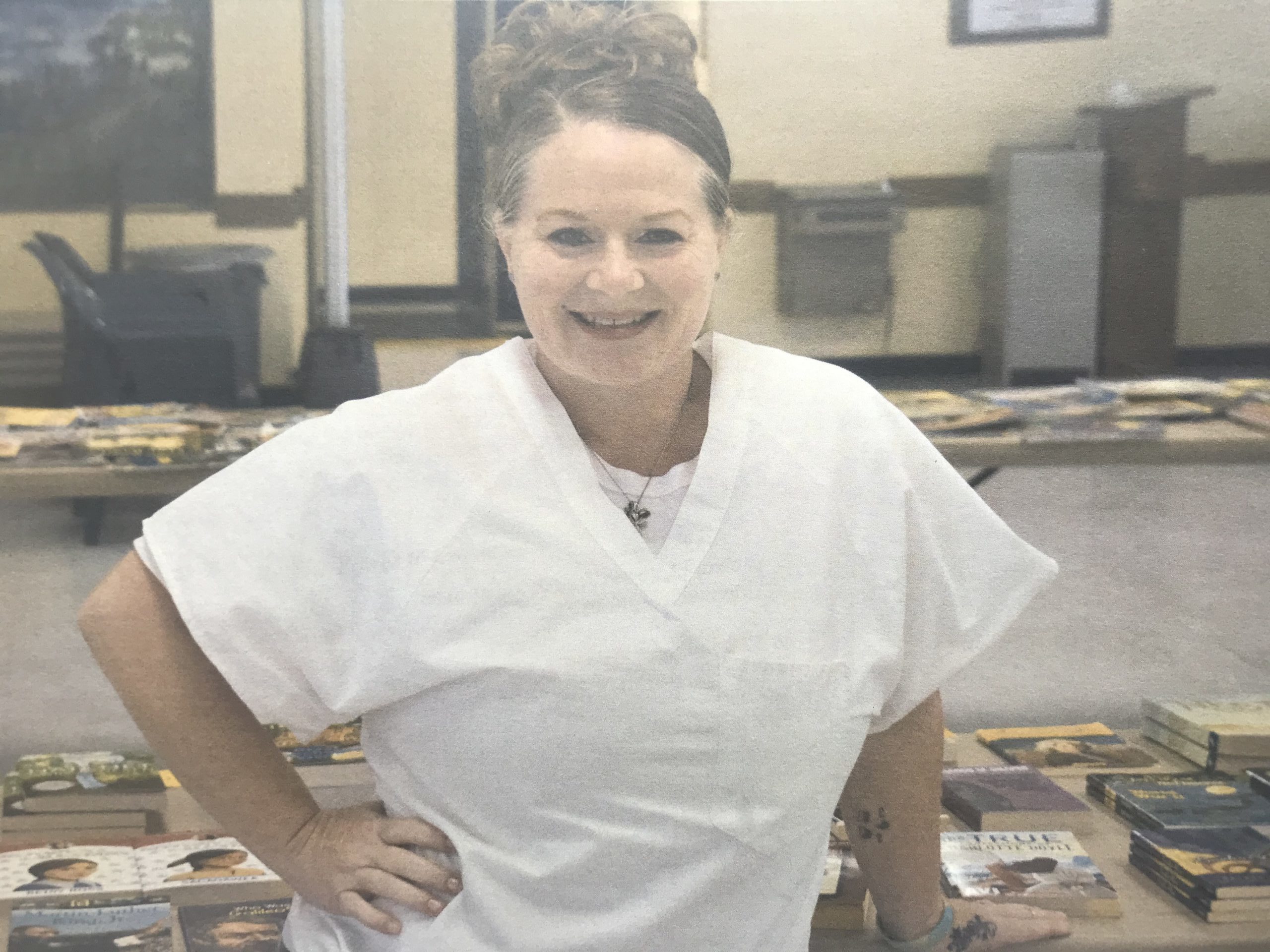Mississippi Today
Woman imprisoned for 25 years attempts freedom again, citing Mississippi Today reporting

Attorneys for a woman convicted of capital murder in the death of her then-fiance's son are once again asking the court for a new trial.
This time, the request is partly based on what defense attorneys say is contradictory testimony made by child abuse pediatrician Dr. Scott Benton, as first reported in Mississippi Today's “Shaky Science, Fractured Families” series.
The attorneys for Tasha Shelby also say one of the jurors who convicted her in 2000 was the great-uncle of the deceased child in the case.
Both the Attorney General's office and a spokeswoman from the University of Mississippi Medical Center, which employs Benton, declined to answer questions or provide a comment for this story.
Shelby has been in prison for 25 years following the death of her then-fiance's 2-year-old son Bryan Thompson, or little Bryan. While Benton was not involved in her trial in 2000, he was the state's only expert witness at her 2018 Post-Conviction Relief hearing.
The hearing came shortly after the medical examiner Dr. Leroy Riddick changed the manner of death on little Bryan's death certificate from homicide to accident after reexamining medical records and his own files. He concluded in an affidavit filed with the court that a family history of seizures may have played a role in the toddler's death.
“If, at the time of the autopsy and trial, I had known about Bryan Thompson IV's seizures days before his collapse, I would have approached the case differently. Moreover, the forensic evidence supporting ‘The Shaken Baby Syndrome' and severe brain reactions to minor trauma has changed significantly since 1997,” he wrote. “Given this information, it is likely that my conclusions might have been different.”
Shelby's attorneys brought forth four witnesses: a forensic pathologist, a biomechanics expert, a neurologist and Riddick. The state brought forth Benton, who maintained that Bryan died from blunt force trauma to the head with “acceleration/deceleration,” or shaking, involved.
The Harrison County judge denied Shelby's petition. In upholding that decision, the Court of Appeals cited Benton's testimony as determinative: his willingness to say what had been said at her first trial effectively negated the new perspectives her attorneys presented.
The hearing was “a battle of experts,” the court wrote. “Dr. Benton was a qualified expert witness, and he responded to each of the points raised by Shelby's experts.”
Now, however, Shelby's attorneys are comparing statements Benton made in Shelby's hearing to statements he made for the defense in an Alabama case against Michael Mixon last year.
“If Scott Benton had testified for Shelby the way he testified for Mixon, she would be free. Because there would be no evidence for the state to support the fallacy that she shook the child to death,” Shelby's attorney Valena Beety told Mississippi Today.

Shelby, who had given birth to her daughter two weeks earlier via a C-section, told police she was in her bed the night of May 30, 1997, when she heard a loud thump from Bryan's room. When she went into his room, she said he was on the floor gasping for air and exhibiting signs of a seizure. She and her then-fiance immediately took him to the hospital, where he died the next day.
Hospital records show his brain bleed was “trace in size” and only on one side of the brain, according to Shelby's attorneys.
But by the time of the autopsy, the bleed was larger and had spread to both sides of the brain. The filing says Benton did not distinguish between the two, but only cited the large bleed on both sides of the brain in the autopsy, which he said supported the idea the toddler's injuries could not have come from a fall or seizure.
“Dr. Benton testified Bryan was shaken because he had diffuse subarachnoid hemorrhage, and that impact on one side of the head would not explain the diffuse hemorrhage,” the filing says.
The filing also refers to testimony Benton gave about bridging veins being the cause of little Bryan's bleed. Benton said shaking was the only cause of such an injury, but more recent research has shown small vessels, or minimally traumatic bleeding in the outer layer of tissue that covers the brain, can cause subdural hemorrhage, according to a diagnostic radiology expert.
In the Alabama case, however, Benton described a litany of causes of brain bleeds, only the first of which is trauma, in detail on the stand.
The filing also points out a seeming contradiction in testimony Benton gave in the Alabama case about the possibility of a seizure disorder compared to his exclusion of such a possibility in Shelby's case.
Benton said in Shelby, there was no diagnosis in the medical records of Bryan having a seizure disorder and dismissed such a possibility. In Mixon, however, he said there was no way to determine if a seizure had occurred unless an EEG is performed at the hospital.
“He testified in favor of a diagnosis of seizures, unless there was an EEG to rule them out” in the Alabama case, the filing stated.
The Mississippi Supreme Court will decide whether to grant Shelby's attorneys to file the motion for post-conviction relief in Harrison County, where the original trial was held.
This article first appeared on Mississippi Today and is republished here under a Creative Commons license.
Did you miss our previous article…
https://www.biloxinewsevents.com/?p=235899
Mississippi Today
On this day in 1983


May 6, 1983

A federal judge sentenced Raymond Bledsoe to life for beating Black jazz saxophonist Steven Harvey to death in a Kansas City park because of his race.
A Missouri jury had acquitted Bledsoe of murder, and afterward, he reportedly bragged to his girlfriend about killing a “n—–” and getting away with it.
Harvey's family members, Alvin Sykes and the Steve Harvey Justice Campaign convinced federal authorities to pursue the case. At the time, the conviction was reportedly the fourth under the Civil Rights Act of 1968.
In 2013, federal corrections authorities denied parole to Bledsoe. To date, he remains the longest serving inmate convicted under that Civil Rights Act.
Sykes later helped bring about both the Justice Department's reopening of the Emmett Till case and the passage of the Emmett Till Unsolved Civil Rights Crime Act.
Sykes died in 2021, and his New York Times obituary read, “Though he never took a bar exam, Mr. Sykes was a brilliant legal and legislative operator whose admirers included City Council members, politicians and U.S. attorneys general from both parties. … He led a monk's life in the name of social justice. He rarely held a job, wore second hand clothing and lacked a permanent address for long stretches of time, staying with friends instead and living off donations and, later, speaker fees. He never learned to drive and so walked everywhere, most often to the reference section of the library in Kansas City, Missouri, where he did his research, or to a booth at a restaurant that he used as an informal office, his papers surrounded by cups of coffee and stubbed-out cigarettes.”
This article first appeared on Mississippi Today and is republished here under a Creative Commons license.
Mississippi Today
Podcast: How the 2024 Medicaid expansion debate died

Mississippi Today's Adam Ganucheau, Bobby Harrison, Geoff Pender, and Taylor Vance discuss the breakdown of Medicaid expansion negotiations in the Legislature.
This article first appeared on Mississippi Today and is republished here under a Creative Commons license.
Did you miss our previous article…
https://www.biloxinewsevents.com/?p=355689
Mississippi Today
On this day in 1917
May 5, 1917

Eugene Jacques Bullard became the first Black American combat pilot.
After the near lynching of his father and hearing that Great Britain lacked such racism, the 12-year-old Georgia native stowed away on a ship headed for Scotland. From there, he moved to Liverpool, England, where he handled odd jobs before becoming a boxer, traveling across Europe before he settled in Paris.
“It seems to me that the French democracy influenced the minds of both White and Black Americans there and helped us all to act like brothers as near as possible,” he said. “It convinced me, too, that God really did create all men equal, and it was easy to live that way.”
When World War I began, he was too young to fight for his adopted country, so he and other American expatriates joined the French Foreign Legion. Through a series of battles, he was wounded, and doctors believed he would never walk again.
No longer able to serve in the infantry, an American friend bet him $2,000 that he could not get into aviation. Taking on the challenge, he earned his “wings” and began fighting for the French Aéronautique Militaire.
He addressed racism with words on his plane, “All Blood Runs Red,” and he nicknamed himself, “The Black Swallow of Death.”
On his flights, he reportedly took along a Rhesus monkey named “Jimmy.” He tried to join the U.S. Air Service, only to be turned away because he was Black. He became one of France's most decorated war heroes, earning the French Legion of Honor.
After the war he bought a Paris nightclub, where Josephine Baker and Louis Armstrong performed and eventually helped French officials ferret out Nazi sympathizers. After World War II ended, he moved to Harlem, but his widespread fame never followed him back to the U.S.
In 1960, when French President Charles de Gaulle visited, he told government officials that he wanted to see his old friend, Bullard. No one in the government knew where Bullard was, and the FBI finally found him in an unexpected place — working as an elevator operator at the Rockefeller Center in New York City.
After de Gaulle's visit, he appeared on “The Today Show,” which was shot in the same building where he worked.
Upon his death from cancer in 1961, he was buried with honors in the French War Veterans' section of the Flushing Cemetery in Queens, New York.
A sculpture of Bullard can be viewed in the Smithsonian National Space and Air Museum in Washington, D.C., a statue of him can be found outside the Museum of Aviation, and an exhibit on him can be seen inside the National Museum of the U.S. Air Force, which posthumously gave him the rank of a second lieutenant. He is loosely portrayed in the 2006 film, “Flyboys.”
This article first appeared on Mississippi Today and is republished here under a Creative Commons license.
-
SuperTalk FM4 days ago
Driver’s education set to become mandatory in Mississippi as bill passes
-
SuperTalk FM3 days ago
State approves $160M to expand Highway 7 to four lanes in Lafayette County
-
SuperTalk FM7 days ago
Festival merger in Leland sets up one major event for Mississippi Delta
-
Mississippi Business5 days ago
Geartek expanding operations in Alcorn County
-
Mississippi News6 days ago
Two women accused of shoplifting across southeast captured in Mississippi
-
Mississippi News4 days ago
Altercation at Mississippi police department leads to officer-involved shooting
-
Mississippi News23 hours ago
Winston Co. Sheriff’s Office investigates shooting at Dave’s Club
-
Mississippi News6 days ago
Starkville police make arrest in shooting at Dawg Wash South










































